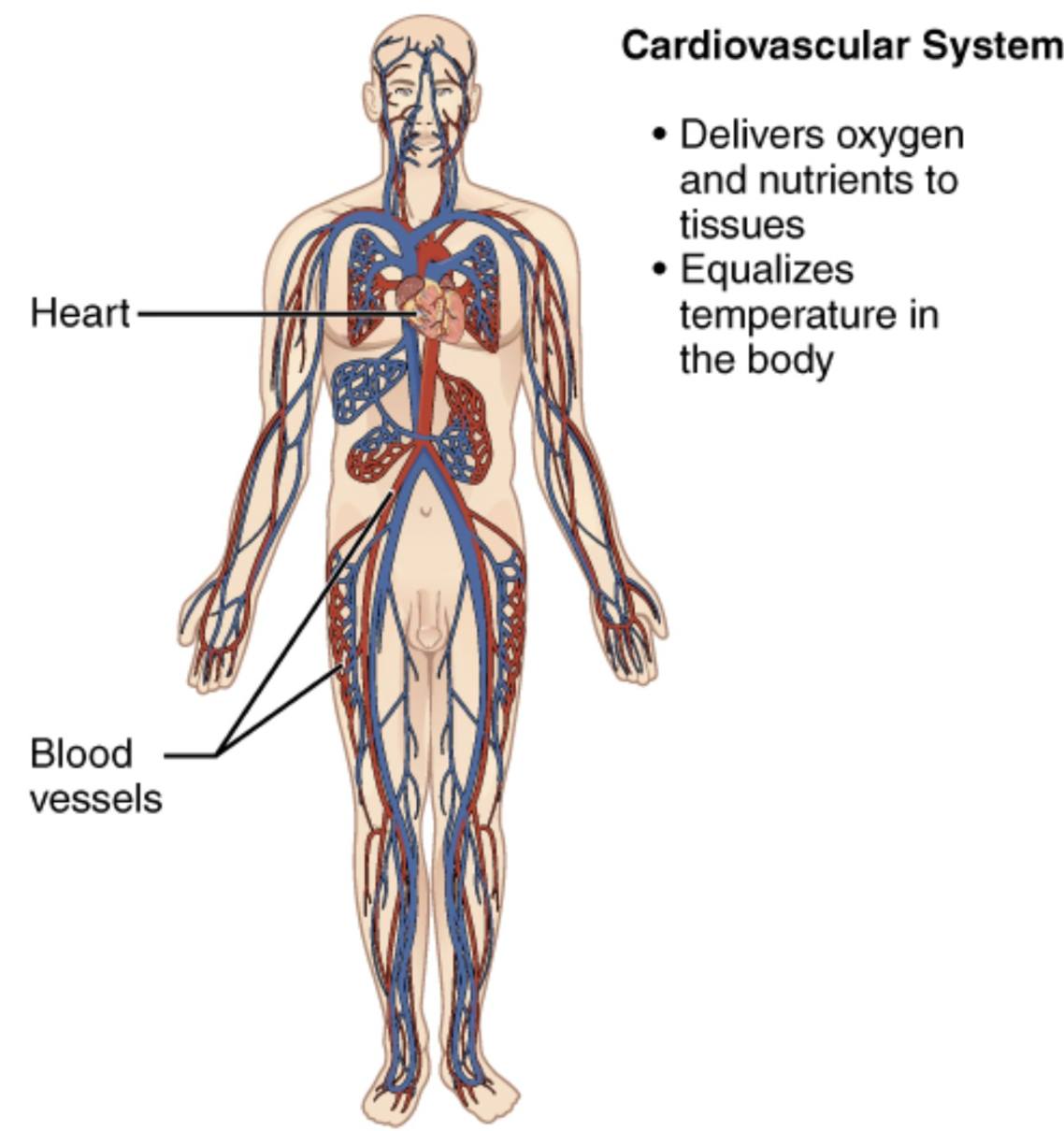The cardiovascular system is a vital network responsible for circulating blood throughout the body, delivering essential oxygen and nutrients to tissues while regulating temperature. This intricate system, comprising the heart, blood vessels, and blood, works tirelessly to maintain homeostasis and support every bodily function. Through a detailed anatomical diagram, this article provides an in-depth look at the structure and function of the cardiovascular system, highlighting its key components and their roles in sustaining life.

Labeled Parts of the Cardiovascular System Anatomy Diagram
Heart
The heart is a muscular organ located in the thoracic cavity, functioning as the pump that drives blood circulation throughout the body. It consists of four chambers—two atria and two ventricles—that coordinate to propel oxygenated and deoxygenated blood via a rhythmic beating action.
Blood vessels
Blood vessels form an extensive network of arteries, veins, and capillaries that transport blood to and from the heart and tissues. Arteries carry oxygen-rich blood away from the heart, veins return oxygen-poor blood to the heart, and capillaries facilitate the exchange of nutrients and waste at the tissue level.
Cardiovascular System
The cardiovascular system encompasses the heart, blood vessels, and blood, working together to deliver oxygen and nutrients while equalizing body temperature. This integrated system ensures efficient circulation and supports metabolic processes across all organs.
Detailed Insights into the Cardiovascular System Anatomy
Anatomy of the Heart
The heart serves as the powerhouse of the cardiovascular system, orchestrating blood flow with precision. Its structure is designed for efficiency and endurance.
- The heart is divided into the right side, which pumps deoxygenated blood to the lungs, and the left side, which pumps oxygenated blood to the body.
- Four valves—tricuspid, pulmonary, mitral, and aortic—prevent backflow, ensuring unidirectional blood flow.
- The myocardium, the heart’s muscular wall, contracts to generate the force needed for circulation.
- Coronary arteries supply the heart muscle with oxygen and nutrients, critical for its continuous operation.
- The sinoatrial node, known as the heart’s pacemaker, initiates electrical impulses to regulate heartbeat rhythm.
Structure and Function of Blood Vessels
Blood vessels are the conduits that distribute blood, adapting their structure to their specific roles in circulation. Their design optimizes delivery and return.
- Blood vessels include arteries with thick, elastic walls to withstand high pressure, veins with valves to prevent backflow, and capillaries with thin walls for exchange.
- Arteries branch into arterioles, which regulate blood flow into capillary beds where gas and nutrient exchange occur.
- Veins contain less muscle and more connective tissue, relying on skeletal muscle contraction to aid venous return.
- Capillaries, the smallest vessels, allow oxygen and glucose to diffuse into tissues while removing carbon dioxide and waste.
- The endothelium, the inner lining of blood vessels, plays a role in regulating blood pressure and clotting.
Role of the Cardiovascular System in Homeostasis
The cardiovascular system maintains bodily equilibrium by delivering essential substances and regulating temperature. Its dynamic functions are critical for survival.
- Oxygen and nutrients, including glucose and amino acids, are transported to cells to support energy production and growth.
- The system removes metabolic waste, such as carbon dioxide and urea, preventing toxicity buildup.
- Blood flow adjusts to environmental changes, such as heat or cold, to regulate body temperature via vasodilation or vasoconstriction.
- Hormones like adrenaline, released during stress, increase heart rate and blood pressure to meet heightened demand.
- The system also aids in immune response by transporting white blood cells to sites of infection or injury.
Blood Composition and Circulation
Blood, the life-sustaining fluid within the cardiovascular system, carries out multiple critical functions. Its composition supports diverse physiological needs.
- Blood consists of red blood cells for oxygen transport, white blood cells for immunity, platelets for clotting, and plasma as the liquid medium.
- Hemoglobin in red blood cells binds oxygen in the lungs and releases it in tissues, ensuring efficient respiration.
- Plasma carries hormones, such as insulin and cortisol, and nutrients like lipids and electrolytes to target organs.
- The circulatory path begins with the heart pumping blood into the pulmonary circuit for oxygenation, then into the systemic circuit for distribution.
- A typical adult has about 5 liters of blood, which circulates the body approximately once every minute at rest.
Conclusion
The cardiovascular system is a remarkable network that sustains life by ensuring the continuous delivery of oxygen and nutrients while maintaining thermal equilibrium. The heart’s rhythmic pumping, the extensive reach of blood vessels, and the dynamic composition of blood work in unison to support every cellular process. Gaining a deeper understanding of this system’s anatomy and function not only highlights its complexity but also underscores its critical role in health and disease prevention, paving the way for advancements in cardiovascular care and treatment.
